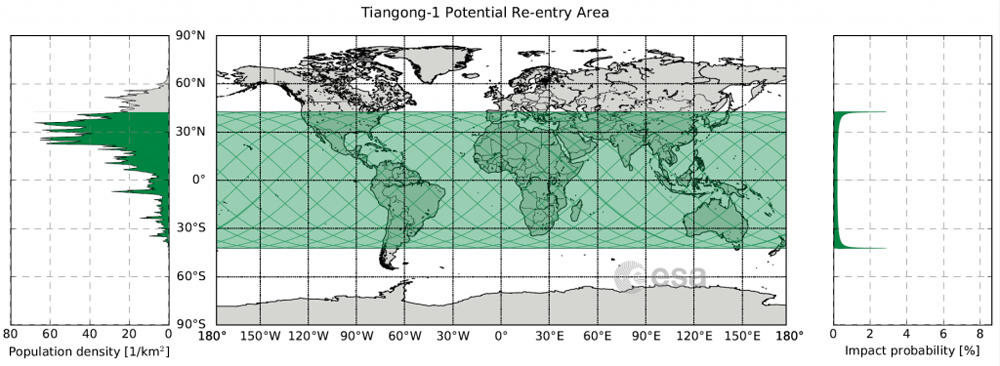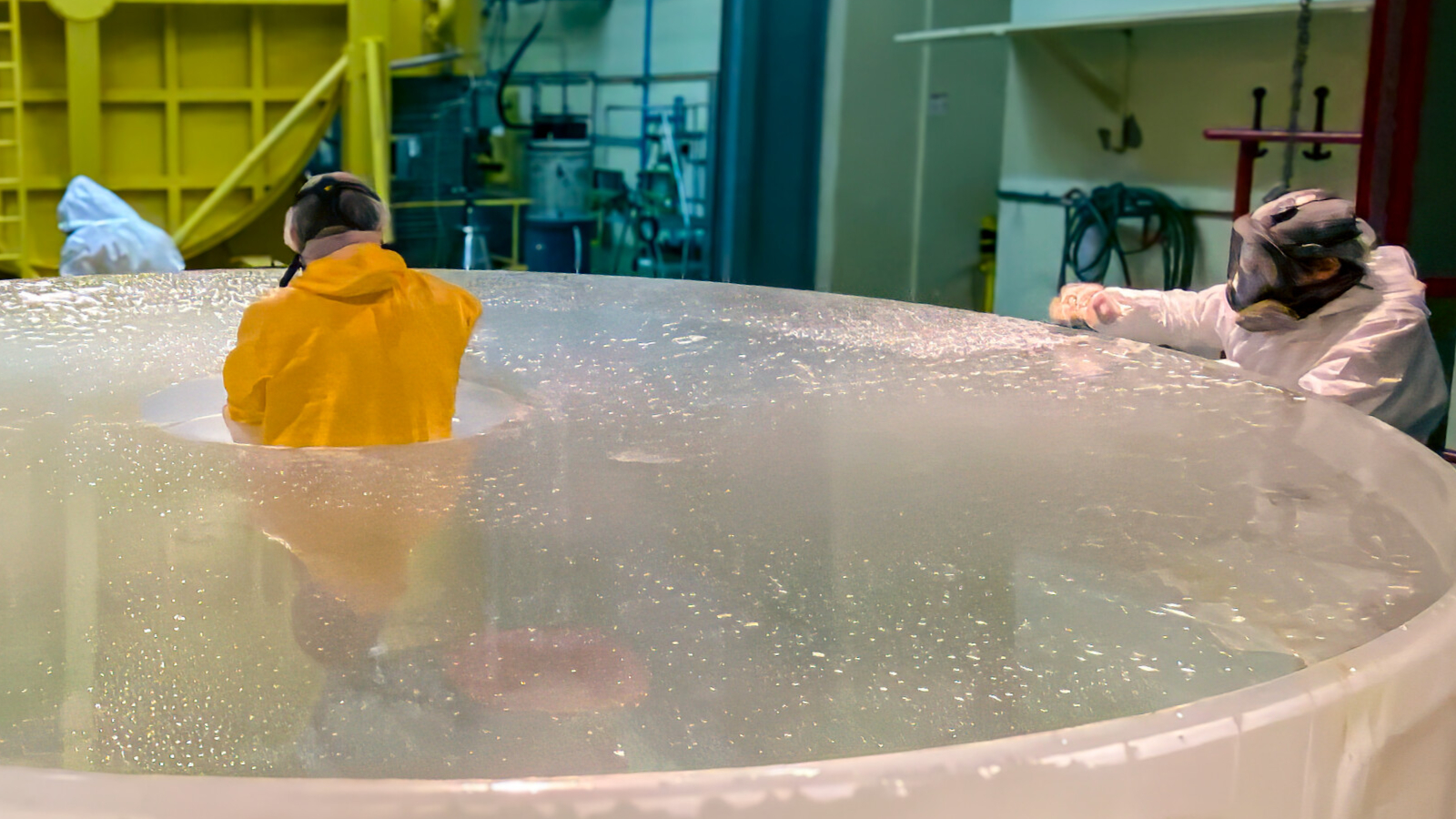
Falling Chinese Space Station Spotted by Skywatcher on Eve of Crash
Around and around it goes, when and where it stops, nobody knows. China's Tiangong-1 space station is making its last orbits around Earth and a skywatcher in Oklahoma has captured one last video of the space lab before its inevitable crash.
Thomas Dorman is a satellite tracker from Tahlequah, Oklahoma. He has been documenting flyovers of Tiangong-1 using telescopes, binoculars, video and still cameras, a DVD recorder, a computer and other gear since the space lab's launch back in September 2011. On Saturday (March 31), Dorman managed to capture a final video of Tiangong-1 in a farewell of sorts. In the video, Tiangong-1 appears as a bright dot zipping from the upper left to lower right. The bright star in the frame is Polaris. [China's Falling Space Station: Everything You Need to Know]
"I was able to spot Tiangong-1 this morning," Dorman told Inside Outer Space. Dorman said he caught Tiangong-1 on video despite high clouds and wind. The space station was still intact and not shedding any fiery debris, he added.
"It was zipping right along! No ablation observed!" Dorman said, adding that Tiangong-1 appeared in his Saturday morning sky about 14 seconds earlier than he expected based on orbital data.
"This is most likely our last chance to observe Tiangong-1," Dorman wrote on Vimeo, where he posted the video, adding that cloudy weather would likely prevent a Sunday morning viewing. "Enjoy."

As of this morning (April 1), China's Tiangong-1 is expected to crash to Earth sometime between late tonight and early Monday (April 2).
A European Space Agency forecast predicts Tiangong-1's re-entry will occur sometime between midnight and early Monday morning. Meanwhile, a forecast from the U.S.-based analysis group Aerospace Corp. predicts Tiangong-1 will likely fall to Earth tonight at 8:10 p.m. EDT (0010 April 2 GMT), give or take 2.5 hours.
Breaking space news, the latest updates on rocket launches, skywatching events and more!

Exactly where the school bus-sized Tiangong-1 will fall remains unknown. The spacecraft, which weighs 9.4 tons (8.5 metric tons), could fall anywhere along its remaining orbital path between the latitudes of 43 degrees north and 43 degrees south, experts have said.
You can track Tiangong-1's fall using the Aerospace Corp.'s dashboard here, which uses data from U.S. Air Force radar tracking systems and telescopes. You can also follow Tiangong-1 using this satellite tracker by N2YO.com.
Editor's note: If you spot Tiangong-1 streaking across your sky during its re-entry and capture video or images of the descent, let us know! You can send images and video in to spacephotos@space.com.
Visit Space.com today for complete coverage of the Tiangong-1 re-entry.
Leonard David is author of "Mars: Our Future on the Red Planet," published by National Geographic. The book is a companion to the National Geographic Channel series "Mars." A longtime writer for Space.com, David has been reporting on the space industry for more than five decades. Follow us @Spacedotcom, Facebook or Google+. Originally published on Space.com.
Join our Space Forums to keep talking space on the latest missions, night sky and more! And if you have a news tip, correction or comment, let us know at: community@space.com.

Leonard David is an award-winning space journalist who has been reporting on space activities for more than 50 years. Currently writing as Space.com's Space Insider Columnist among his other projects, Leonard has authored numerous books on space exploration, Mars missions and more, with his latest being "Moon Rush: The New Space Race" published in 2019 by National Geographic. He also wrote "Mars: Our Future on the Red Planet" released in 2016 by National Geographic. Leonard has served as a correspondent for SpaceNews, Scientific American and Aerospace America for the AIAA. He has received many awards, including the first Ordway Award for Sustained Excellence in Spaceflight History in 2015 at the AAS Wernher von Braun Memorial Symposium. You can find out Leonard's latest project at his website and on Twitter.
